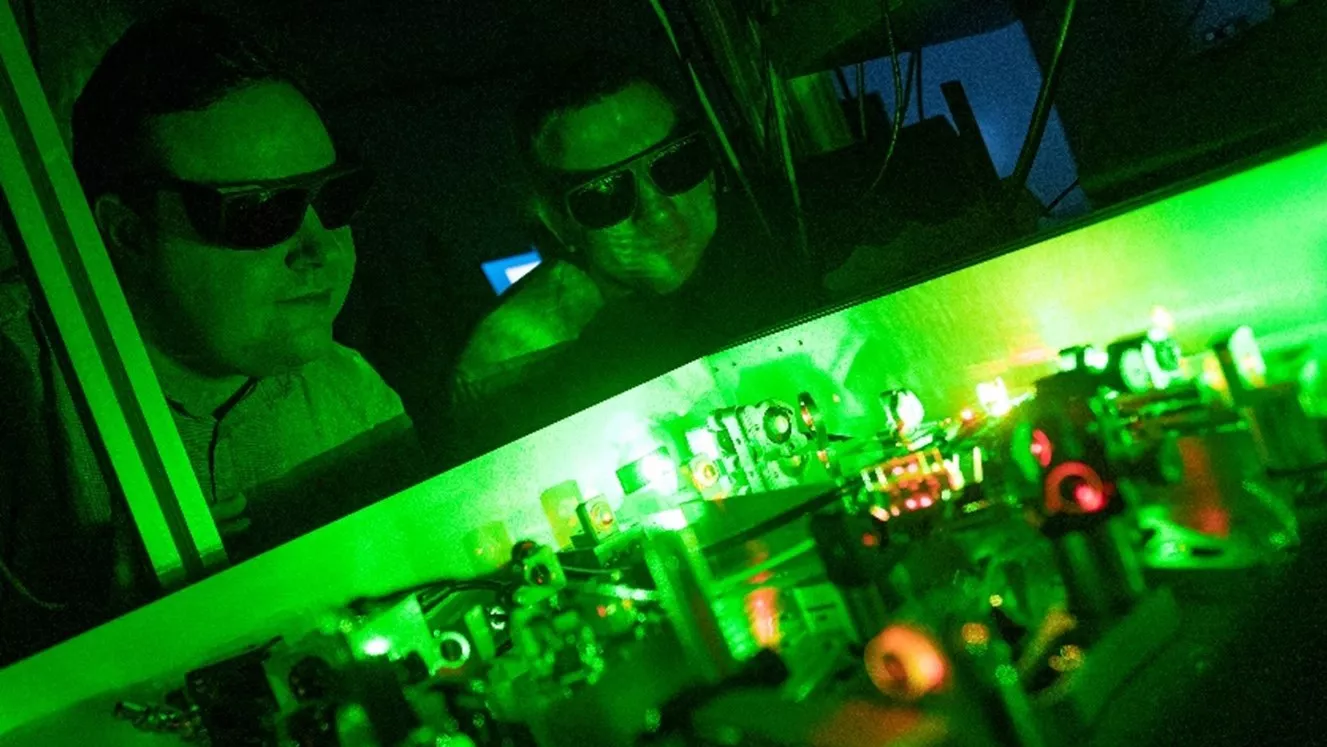An important new discovery about what is known as tunnelling has been announced by the Ultrafast, high-intensity light–matter interactions Research Group of the ELKH Wigner Research Centre for Physics (Wigner RCP), led by Péter Dombi. In the course of their experiments the researchers were able to increase the electric field of the laser light used by orders of magnitude, thus detecting a new manifestation of the tunnel effect. The results could contribute, among other things, to the creation of new nano-optical devices or the design of innovative electron sources, as discussed in a paper published in the leading international nanoscience journal Nano Letters.
Tunnelling is an important feature of the quantum mechanical phenomena that revolutionized physics in the twentieth century. The basic idea is that an electron can pass through a barrier – called a potential barrier – even if it does not have enough energy to do so, according to the rules of classical physics. First mentioned in the 1920s, the phenomenon has been studied by many scientists. Over the past 78 years, a total of five Nobel Prizes have been awarded to researchers who have achieved results or developed practical applications in the field of tunnelling. For example, the creation of the scanning tunnelling microscope, which can examine different surfaces with nanometer precision.

Tunnelling can also be achieved with advanced lasers. For their experiments, the Wigner RCP team used a laser beam with a diameter of one-twentieth of that of the average hair. The researchers further increased the spatial concentration of the laser light energy by using a nano-optical phenomenon caused by gold nanoparticles present on the sample. In this process the electric field of the laser light was increased by orders of magnitude, allowing a new manifestation of the tunnel effect to be detected. In the range studied by the researchers, electrons behave partly according to the rules of quantum mechanics, i.e. they can tunnel through a wall (potential barrier) in front of them, but they also show properties that suggest they behave in a conventional way.

This latest data and further basic research work carried out by Wigner RCP physicists will help the international research community better understand the phenomena related to the tunnel effect. This will facilitate practical applications, such as the creation of nano-optical devices or even electron sources where the duration of the emitted electron packet is a billionth of a millionth of a second. These applications have the potential to revolutionize physics and chemistry research and lead to the creation of a new generation of electron microscopes.